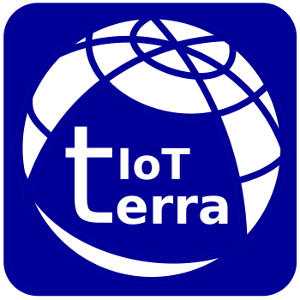
What is Terra IoT System?
The Terra system implements a high-level programming environment to support development of IoT/WSN systems. Basically, Terra System is composed by a small virtual machine that is programmed using a reactive scripting language. A Terra developer can customize the VM interfaces to access hardware specific resources. Terra was built originally targeting devices based on small micro-controllers and very simple radios, but currently we have versions running also in Linux and Android machines. The Terra Site presents detailed informations about Terra.
Contact e-mail: 
Current platforms summary
Summary of current supported platforms and/or operational system. The menu Platforms presents detailed informations for each platform implementation.
All platforms implement a minimal support that includes the virtual machine engine, radio communication, and access to a very simples hardware like LEDs or temperature sensors. The Dev.Status column indicates some additional or special implementation for specific platform.
| Platform Name | MCU/CPU | Protocol/Radio | Dev. Status |
|---|---|---|---|
| TinyOS | 8/16bits, 4/8MHz, 4/8/10KB RAM | IEEE802.15.4 and 900MHz | LEDs, Luminosity, and Temperature Sensor. Optionally a Group Communication library |
| Linux/RPi | RPi or Linux box | UDP/WIFI | |
| Android | Android devices - tested in 6.0 version (API 24) | UDP/WIFI | Screen - Touch and Set Color |
| ESP8266 | 32bits, 80MHz, 96KB RAM | UDP/WIFI | LED and Temperature Sensor |
| ArduinoMega | ATmega2560 - 8bits, 16MHz, 8KB RAM | Proprietary/NRF24L01+ | LED and Temperature Sensor |
Distributions
Source Code
Terra IoT is licensed under the terms of the GPLv3 license.
The system is composed by some modules and tools found at Terra Repository. The Platforms Menu presents informations about the implementation and the build process for each platform.
Terra pre-built environment
Terra IoT system was pre-installed in an Ubuntu Linux virtual machine to support teaching/learning and application development. Tutorial and the download can be found at Terra Site.